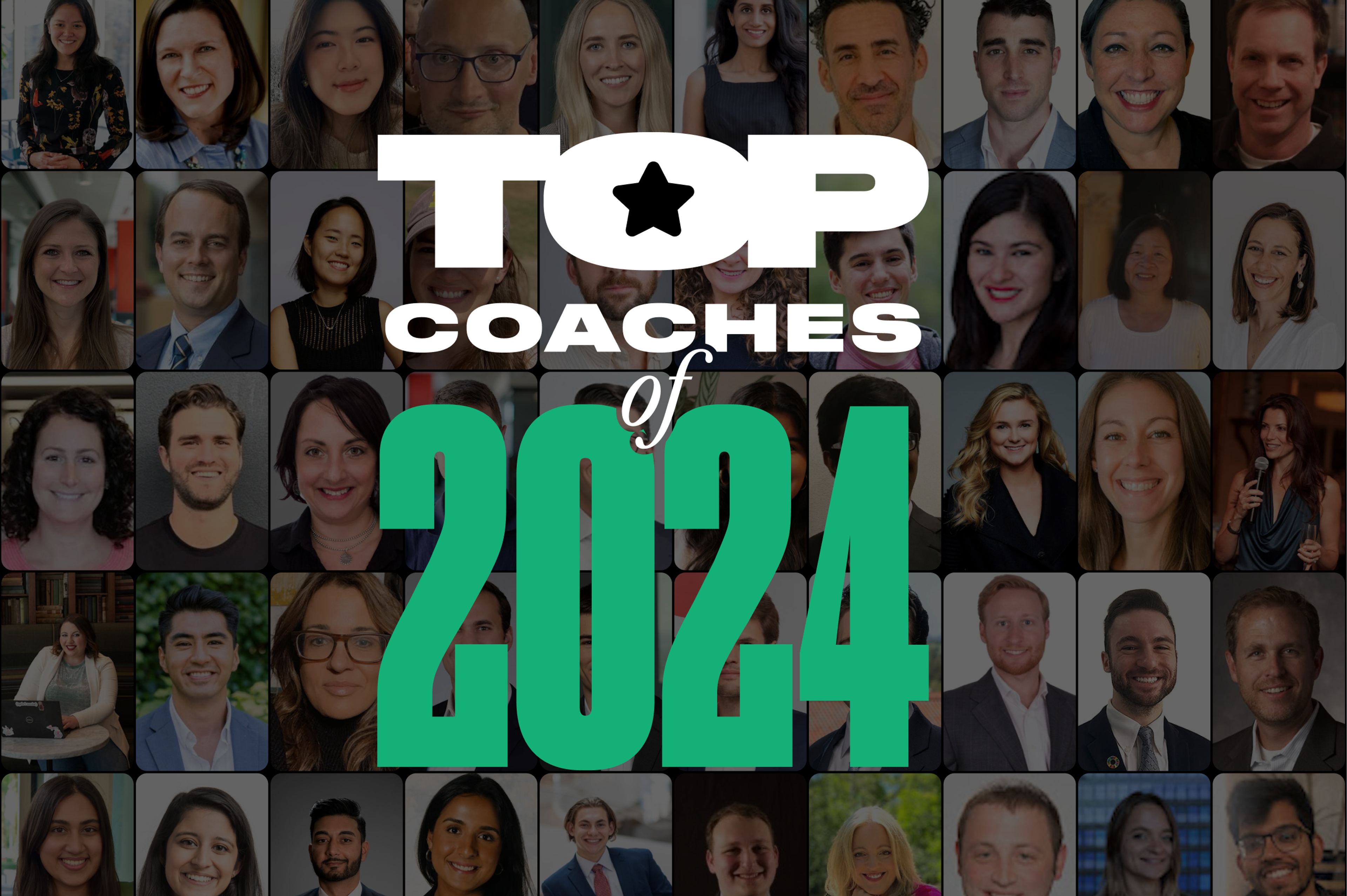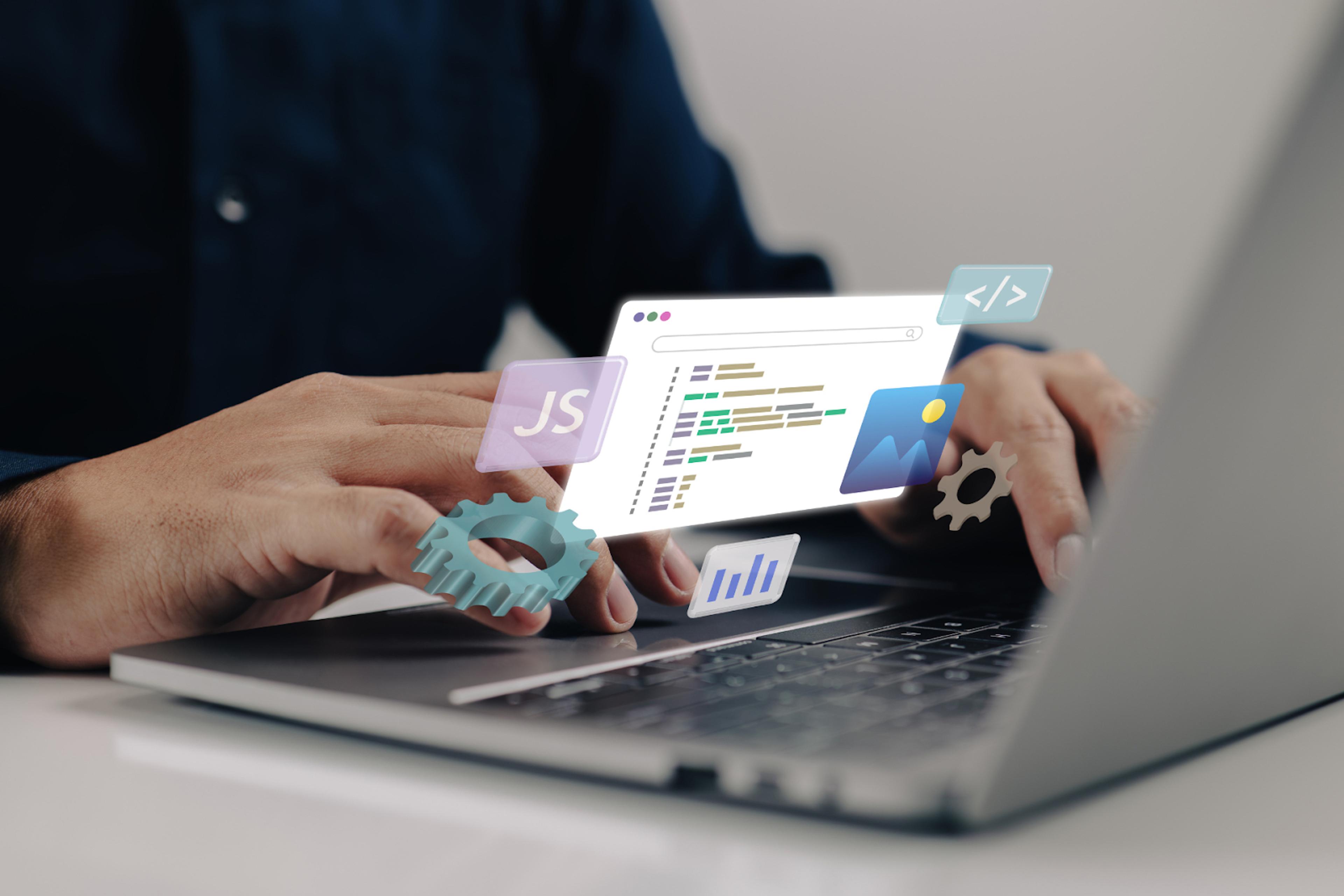The 50 Most Common Product Manager Interview Questions (2025)
Nail your product manager interview with the 50 most common questions and expert-approved answers. Boost your chances with these must-know tips!
Posted September 3, 2025

Table of Contents
Free Event

Featuring Christina P.
Skills to Be a Full-Stack PM
Starting Wednesday, September 10
4:00 PM UTC · 30 minutes

Featuring Christina P.
Preparing for a product manager interview can be a challenge, but it is a critical step in landing your next role. Whether you’re applying to a top tech company or a smaller startup, knowing the most common PM interview questions and having sample answers ready can make a huge difference. In this article, we’ll walk you through the 50 most common product manager interview questions, including tips on how to answer them effectively.
Read: Tips from an Expert: How to Prepare for Your Product Management Interview
Understanding the Product Manager Role
Before diving into the interview questions, it is important to understand what a product manager does. As a PM, your job is to guide the development of a product from idea to launch. This involves collaborating with various cross-functional teams, including engineering, design, marketing, and sales, to ensure that the product meets both user needs and business goals. Product management is about balancing customer needs, market research, and business objectives. In interviews, hiring managers will ask questions that assess your strategic thinking, leadership skills, decision-making process, and ability to execute.
Read: What is Product Management?
Interview Process Overview
In most product management interviews, candidates can expect a series of stages that evaluate different aspects of their skills. The process usually includes the following:
- Phone Screen: Often the first step, where recruiters or hiring managers assess your qualifications, experience, and interest in the role.
- Product Case Interview: This is where you’ll be given a problem and asked to brainstorm a solution, demonstrating product sense and strategic thinking.
- Technical Interview: Some companies include a technical interview to assess your ability to communicate with technical teams and understand basic technical concepts.
- Behavioral Interview: Here, you’ll be asked about past experiences, focusing on how you handle conflicting priorities, deal with difficult stakeholders, and lead product teams.
- Execution & Metrics Interview: You’ll be asked how you measure success, prioritize tasks, and ensure alignment with business goals.
- Final Interview or Onsite: The final round often combines elements from the previous stages and may include additional case studies or collaborative exercises.
Interview Prep: 50 Common Product Manager Interview Questions (With Sample Answers)
General/Behavioral Questions
1. Tell me about a time when you made an unpopular decision.
Sample Answer:
"In a previous role, I had to delay a product launch because the feature wasn’t ready to meet the required user needs. Though sales were upset, I presented data showing the long-term benefits of addressing the user pain points first. The decision ultimately resulted in a much more successful product."
2. Tell me about a time when you had to motivate a team.
Sample Answer:
"When our team was falling behind on a critical deadline, I broke the project down into smaller, achievable tasks and celebrated each milestone. This not only boosted morale but also helped us meet the target without burning out."
3. Tell me about a time when you received negative user feedback on a product you worked on.
Sample Answer:
"After rolling out a new feature, we noticed that users were having trouble navigating it. I gathered direct feedback from users and worked closely with the design team to make the feature more intuitive. Once we simplified the flow, we saw a noticeable improvement in how users interacted with it, leading to a better overall experience."
4. Tell me about a time when you disagreed with an important stakeholder.
Sample Answer:
"I disagreed with a stakeholder about prioritizing a feature over another. They wanted to launch quickly, but I argued that the first feature needed more user testing. After presenting data and research, we agreed to delay the launch, which ultimately improved the feature’s effectiveness."
5. Tell me about a time when you had to handle conflicting priorities.
Sample Answer:
"In a recent project, I had to balance the needs of both marketing and product teams. I communicated clearly with both sides, aligning tasks with overall business goals, and worked out a compromise that met both teams’ objectives without overloading resources."
6. Tell me about a time when you failed (or one of your products failed).
Sample Answer:
"We launched a feature based on assumptions about user needs, but after launch, the adoption rate was much lower than expected. I quickly gathered user feedback, adjusted the feature to meet user demands better, and re-launched it. The second version saw better engagement and helped us learn to validate assumptions earlier in the process."
Read: The 10 Most Common Product Management (PM) Behavioral Interview Questions
Product Sense & Design Questions
7. How would you redesign a product to better meet user needs?
Sample Answer:
"I would start by conducting thorough user research to pinpoint the pain points. After identifying the problems, I’d work with the design team to prioritize which issues to tackle first. I’d focus on creating solutions that directly address the most critical user concerns."
8. If you were the PM for a new wearable device, what features would you prioritize for its first release?
Sample Answer:
"For a new wearable device, I would prioritize basic functionality like health tracking and long battery life. I’d focus on making the device simple and user-friendly for the first release, then look for opportunities to add more features based on user feedback."
9. How would you define the target audience for Instagram Stories?
Sample Answer:
"The target audience for Instagram Stories is primarily younger, tech-savvy individuals who engage with social media frequently. They value quick, visually engaging content and appreciate the ability to share moments instantly with friends or followers."
10. How would you improve the user experience for an existing product?
Sample Answer:
"I would first analyze user feedback to identify key areas where users are struggling. Then, I would collaborate with the design team to streamline the interface, simplify workflows, and ensure the product delivers value without unnecessary friction."
11. How would you design a product for a specific user group, like delivery drivers or working parents?
Sample Answer:
"I would start by conducting user research to understand their pain points and daily challenges. Based on that research, I’d design features that address their needs directly, such as time-saving tools for delivery drivers or scheduling flexibility for working parents."
Read: The Product Design Interview: Ultimate Guide (With Common Questions)
Product Strategy Questions
12. How would you increase the revenue of an existing product?
Sample Answer:
"I would focus on analyzing user behavior to identify upselling opportunities. I’d also look at potential partnerships or premium features that could offer value without alienating existing users. In addition, improving user engagement through targeted marketing campaigns could increase lifetime value."
13. How would you price a new product in a competitive market?
Sample Answer:
"I would begin by conducting market research to understand competitor pricing and user willingness to pay. I’d then test various pricing models (e.g., freemium, tiered pricing) through A/B testing and adjust based on user response."
14. What’s the biggest challenge that X product faces?
Sample Answer:
"The biggest challenge for this product is user adoption. To address this, I’d enhance the onboarding experience to make the product easier to use, gather more user feedback to ensure the product meets their needs, and incorporate a more intuitive interface."
15. How would you handle pricing pressure from competitors?
Sample Answer:
"I would focus on increasing user loyalty by enhancing product features that competitors might not offer. I’d also emphasize the unique value of our product and look for opportunities to improve cost-efficiency without compromising quality."
16. How do you determine product-market fit?
Sample Answer:
"I would measure product-market fit by looking at metrics like user engagement, retention rates, and customer satisfaction. If users consistently return to the product, provide positive user feedback, and recommend it to others, we’ve likely achieved product-market fit."
Metrics & Estimation Questions
17. What KPIs would you focus on as a PM at Zillow?
Sample Answer:
"I’d focus on conversion rates, property search engagement, and customer retention as key metrics. These would give insight into the effectiveness of the platform and how well users are interacting with the listings."
18. Estimate the number of Uber drivers in Beijing.
Sample Answer:
"I would start by looking at the population size and estimating how many adults are likely to use ride-sharing services. Then, based on market share and usage patterns, I’d estimate the number of drivers."
19. How would you calculate the ROI of a new feature?
Sample Answer:
"I would calculate ROI by comparing the potential benefits of the feature like increased user engagement or revenue, to the costs associated with its development. I’d track metrics like conversion rates and user retention post-launch to determine its impact."
20. How would you set up an A/B test for a product feature?
Sample Answer:
"I’d start by identifying the key variable I want to test, such as a feature’s usability or a pricing change. Then, I’d define the success metrics, split users into control and test groups, and track how the different versions perform. Based on the results, I’d make informed decisions about which version to roll out."
Execution & Leadership Questions
21. How would you prioritize tasks with limited resources?
Sample Answer:
"I would prioritize tasks based on their impact on business goals and user needs. I would focus on high-impact tasks that address the most critical user problems or contribute to business outcomes."
22. You’ve launched a new feature, but user engagement is lower than expected. How would you address it?
Sample Answer:
"I’d gather user feedback to identify the pain points, then iterate on the feature to improve its user experience. I’d also monitor user engagement over time to ensure the changes have the desired effect."
23. How do you keep your team aligned when working on a product?
Sample Answer:
"I keep the team aligned by regularly communicating the product vision, priorities, and progress. I ensure that everyone understands how their work fits into the broader goals, and I encourage frequent check-ins to address any concerns or changes."
24. Tell me about a time when you worked with cross-functional teams to launch a product.
Sample Answer:
"In a previous project, I worked closely with engineering, marketing, and design teams to launch a mobile app. We coordinated timelines, shared insights, and kept open lines of communication to ensure the product met both user needs and business goals."
25. How do you prioritize features for a product roadmap?
Sample Answer:
"I prioritize features based on their alignment with business goals and the potential impact on user engagement. I also consider the technical feasibility of each feature and the resources available to execute them."
Technical Questions
26. How would you collaborate with technical teams on a product launch?
Sample Answer:
"I would work closely with the technical team to ensure that the product is developed according to specifications and on schedule. I would communicate regularly to identify potential roadblocks and ensure that user feedback is incorporated into the development process."
27. How do you make technical trade-offs when designing a product?
Sample Answer:
"I consider factors like user needs, technical feasibility, and potential impact on business goals. I consult with technical teams to understand the trade-offs and make decisions based on which option provides the most value to the users and the business."
28. How would you work with engineers to define technical requirements for a new product feature?
Sample Answer:
"I would begin by understanding the user needs and business goals for the feature. Then, I’d collaborate with the engineering team to define the technical specifications needed to deliver the feature, ensuring alignment with the overall product vision."
29. How would you use agile methodologies in product development?
Sample Answer:
"I’d use agile methodologies to break the product development process into smaller, manageable sprints. This allows us to iterate quickly, gather user feedback, and continuously improve the product while maintaining flexibility to adapt to changing priorities."
30. How do you handle product redesigns based on user feedback?
Sample Answer:
"When redesigning a product based on user feedback, I first prioritize the most critical issues that directly impact user experience. I work closely with design and engineering to make incremental improvements, test with users, and refine the product as we go."
31. How do you handle tight deadlines when launching a new feature?
Sample Answer:
"When working with tight deadlines, I prioritize tasks based on their impact on user needs and business goals. I break the project into smaller tasks and delegate effectively. I also ensure that the team has the resources and clarity they need, and I focus on getting the minimum viable product (MVP) out first, followed by iterating based on feedback."
32. How do you measure the success of a product after launch?
Sample Answer:
"I measure success through key performance indicators (KPIs) such as user adoption, engagement rates, conversion rates, and customer satisfaction. I also track user feedback and market performance to understand how the product is resonating with users and achieving business objectives."
Read: The Most Common Technical Product Manager Interview Questions - and How to Answer Them
33. How do you incorporate user research into the product development process?
Sample Answer:
"I use user research throughout the development process, starting from ideation to post-launch. Before developing a product, I conduct surveys, interviews, and usability tests to identify user pain points. During development, I continuously gather feedback to ensure we’re meeting user needs and iterating as necessary."
34. How do you balance long-term product goals with short-term business needs?
Sample Answer:
"I balance long-term goals with short-term needs by aligning both with the company’s vision. I focus on solving immediate business problems without compromising the product’s long-term vision. Regular stakeholder communication helps ensure that both perspectives are considered and integrated into the roadmap."
35. Tell me about a time when you had to pivot the product strategy.
Sample Answer:
"In a previous role, we had to pivot our product strategy after gathering user feedback and market data that showed we were missing the mark. We quickly realigned with the users’ true needs and adjusted the product features accordingly. This decision led to a more refined and successful product."
36. How do you handle competing priorities from different departments?
Sample Answer:
"When faced with competing priorities, I ensure that I understand each department’s goals and communicate with them to find common ground. I assess each priority’s impact on the user experience and business goals, and work with the relevant teams to create a roadmap that aligns with the company's overall strategy."
37. How do you manage customer expectations during product delays?
Sample Answer:
"I manage customer expectations by being transparent and proactive in communication. I explain the reason for the delay, provide a clear timeline, and assure them that the delay is to ensure a better product. I also offer regular updates until the product is ready to launch."
38. How do you use data to make product decisions?
Sample Answer:
"I rely heavily on data, including user feedback, product usage metrics, and market research, to inform product decisions. I use tools like A/B testing to validate assumptions and continuously iterate based on actionable insights. Data helps me make informed decisions that align with both user needs and business goals."
39. What do you think is the most important aspect of product strategy?
Sample Answer:
"The most important aspect of product strategy is aligning the product with the user’s pain points while keeping the business goals in focus. A successful strategy should identify the market opportunity, define the product’s value proposition, and ensure that it solves a real problem for the target audience."
40. How would you handle a situation where the user research indicates a need for a feature, but engineering says it’s too complex to implement?
Sample Answer:
"I would work closely with both teams to understand the technical constraints and see if we can find a simpler approach. I would also look for alternative solutions that meet user needs and align with business goals without overburdening the engineering team."
41. What is your approach to prioritizing features in a product roadmap?
Sample Answer:
"I prioritize features by evaluating the potential impact on user needs and business goals, as well as the complexity of implementation. I consider factors like market demand, user feedback, and technical feasibility, and I often collaborate with other teams to ensure alignment across the board."
42. How do you ensure your team is on the same page when working on a product?
Sample Answer:
"I ensure alignment by holding regular check-ins and reviews with the product team and other departments. I also ensure that the product vision and goals are clearly communicated at the outset, and I keep the team informed of any changes in direction."
43. How would you improve an existing product feature based on user feedback?
Sample Answer:
"I would start by analyzing the user feedback to identify common themes and pain points. I would then work with the design and engineering teams to implement changes that directly address these issues. After launching the updates, I’d continue to monitor user engagement and iterate further if needed."
44. How would you define product-market fit for a new product?
Sample Answer:
"Product-market fit is achieved when the product solves a real user problem in a way that resonates with the target audience, and users are willing to pay for or engage with it. I measure it by looking at user adoption, engagement rates, and customer satisfaction over time."
45. How do you ensure that your products align with business objectives?
Sample Answer:
"I ensure alignment by regularly engaging with stakeholders to understand their goals and challenges. I then map out product features and strategies that support those objectives. I continuously monitor progress and adjust the product roadmap as necessary to maintain alignment with business goals."
46. How would you handle user requests for features that don’t align with the product vision?
Sample Answer:
"I would carefully evaluate the user request to understand the underlying need. If it doesn’t align with the product vision, I would explain why and offer alternative solutions that address the same pain points while staying true to the product’s overall goals. Transparency and communication are key in these situations."
47. Tell me about a time when you had to make a data-driven decision.
Sample Answer:
"When deciding whether to expand a product feature, I analyzed user engagement metrics, conducted A/B tests, and reviewed user feedback. The data indicated that users were responding positively to the feature, so we moved forward with the expansion. This resulted in increased user retention."
48. How do you handle a situation where the product doesn’t meet the expected KPIs after launch?
Sample Answer:
"I would first gather user feedback to understand the reasons behind the lack of engagement. I’d analyze the KPIs to pinpoint areas for improvement, then work with the team to iterate on the product. It’s important to quickly identify the problem and adjust the strategy to meet user needs."
49. How do you collaborate with cross-functional teams on a product launch?
Sample Answer:
"I ensure clear communication from the beginning by defining roles and responsibilities for each team. I set up regular meetings to track progress, address issues, and align on the product’s vision and goals. By fostering collaboration and keeping everyone informed, we ensure a smooth launch."
50. What’s your approach to agile methodologies in product management?
Sample Answer:
"I use agile methodologies to break down product development into manageable sprints, allowing for quick feedback and iteration. This approach ensures that we are always adapting to user needs and making improvements based on real-time data. It also allows us to prioritize the most impactful features and deliver them quickly."
What to Expect After Your Interview
After your product manager interview, you should expect to hear back from the company within a few days to a week. The company may provide feedback on your interview performance and indicate whether they will proceed with your candidacy. If you're selected for the next stage of the interview process, you may be invited to meet with more team members or participate in a follow-up exercise.
Read: How to Write the Best Follow-Up Email After the Interview
The Bottom Line
Preparing for a product manager interview involves more than just answering questions. It is about demonstrating your ability to lead, collaborate, and innovate. During the product manager interview process, hiring managers are not only evaluating your technical and strategic skills but also your ability to communicate with cross-functional teams, including development teams. It’s essential to show how you can balance user needs with business goals while driving product success. Thorough interview preparation, such as researching the company and rehearsing with mock interviews, can help you navigate the hiring process confidently and leave a strong impression.
By studying common product manager interview questions, preparing real-life examples from your past experiences, and clearly showing your skills, you'll boost your chances of success. Stay honest, positive, and excited throughout the entire interview. With the right approach, you’ll be well on your way to becoming a great product manager.
Ready to Nail Your Product Management Interview Questions?
Talk with our expert coaches today and get personalized guidance to master these interview questions. Start preparing with insider tips and boost your chances of success!
Also read:
- Product Sense: What it Is & How to Develop It
- Product Management Case Study Interviews: The Ultimate Guide
- An Overview of the Different Roles in Product Management
- How to Write a Powerful Product Management Cover Letter
- An Expert’s Guide to Resumes: Five Tips to Make You Stand Out
FAQs
How should I prepare for a product manager interview?
- To prepare for a product manager interview, start by researching the company's product strategy, including the existing products, their target customers, and how they position themselves in the market. You should be ready to discuss how you can contribute to the product team, particularly around improving the current product or solving customer pain points. Think about examples from your experience where you’ve solved tough product management problems, prioritized product ideas, or successfully launched a new feature. Also, be prepared for PM interview questions focused on decision-making, user feedback, and working with cross-functional teams. Case studies are common in product management interviews, so practice your strategic thinking by walking through problems logically and communicating your thought process clearly.
What are the 5 P's of an interview?
- The 5 P’s of an interview are:
- Preparation – Know the company’s products, their market research, and the role you're applying for. Prepare specific examples from your experience that align with the company's needs and the role of a product manager.
- Practice – Rehearse answering common product manager interview questions like “Tell me about a time you faced a major challenge” or “How do you prioritize competing product ideas?”
- Professionalism – Be on time, dress appropriately, and treat everyone you meet with respect. How you carry yourself can make a big difference.
- Presentation – Be clear and concise when answering PM interview questions. Practice telling stories that highlight your leadership skills and experience in product management.
- Passion – Show your enthusiasm for the role, the company’s product strategy, and their mission. A genuine passion for the product can help you stand out from other candidates.
What questions to ask a product manager in an interview?
- When interviewing a product manager, asking thoughtful follow-up questions shows you're genuinely interested in the role and helps you understand if the position aligns with your goals. Here are some questions to consider:
- How do you prioritize product features when there are multiple competing ideas?
- What’s the biggest product challenge you’ve faced, and how did you overcome it?
- How do you collaborate with technical teams to ensure product ideas come to life?
- How do you measure the success of a new feature, and which specific metrics do you focus on?
- Can you walk me through a recent product redesign process and how you managed the execution?
What are the three main skills a great product manager must possess?
- A great product manager needs a combination of analytical skills, leadership skills, and strategic thinking:
- Communication – As a PM, you must be able to clearly explain product management concepts to technical teams and non-technical stakeholders. Being able to present ideas effectively and keep everyone on the same page is key.
- Decision-making – Product managers are often faced with difficult decisions, like prioritizing user needs or deciding which features to build first. You need to make data-driven decisions quickly and ensure they align with business goals and customer needs.
- Empathy – Great PMs understand user pain points and can use that understanding to make product sense. Whether it’s addressing frustrations with an existing product or ensuring user research drives product decisions, empathy helps create solutions that truly meet customer needs.











